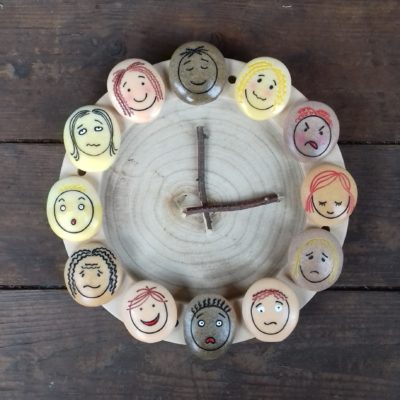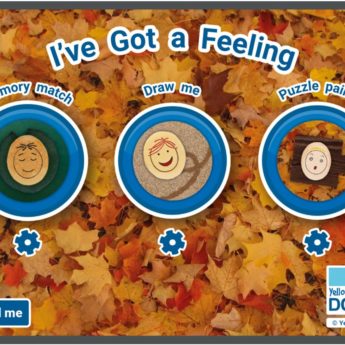Exploring emotions through bookish play
Just like any other skill learning to identify and express emotions is a vital part of healthy social and emotional development in children. That is why it is important to teach and encourage our children how to identify and cope with big emotions. As parents, teachers and early years practitioners, it can be hard to know how to do this in an engaging way, but in all honesty, it can be as simple as using books such as Conker the Chameleon and open-ended play resources to model feelings.
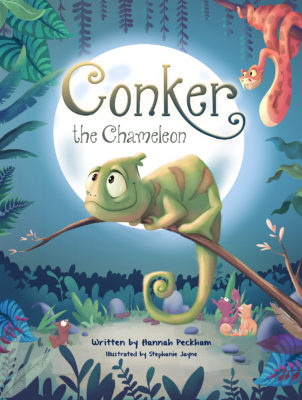
In this blog, children’s author and counsellor Hannah Peckham, explores how you can team Conker the Chameleon along with Yellow Door’s Emotion and Self-Regulation Stones to encourage healthy social and emotional development.
As the author of Conker the Chameleon it was my primary focus to enable children to see different feelings modelled throughout the pages and in turn have the opportunity on the activity pages to explore their own feelings. It is widely believed that children learn best in a play environment, so play resources such as Emotion Stones teamed with a story in which they can experience what the characters are feeling can open up these lines of communication in a safe and supportive setting and allow them to build the foundations of emotional literacy.
The first step to coping with big feelings is identifying them. Conker and his friends experience lots of different feelings throughout the story. While reading you could ask your child to match the correct Emotion Stone to what they think Conker is feeling. You can then talk to them about why Conker might be feeling this way and if they have ever felt similar. When discussing a child’s own feelings, you can also incorporate the concept that friends and adults might have similar feelings in the same situation. Helping your child to identify feelings in others will also allow them to start developing emotional attunement which is important for emotional intelligence and helps children develop empathy.
Big feelings can feel scary and overwhelming, especially for children. Making space for and validating your child’s big emotions in the moment but also at a reflective distance gives them permission to develop an acceptance of their feelings, even the difficult ones. When feelings are made acceptable, they are less likely to fight against them and when emotions are understood they feel less scary. This in turn can diminish the stress and anxiety that comes along with bottling feelings up.
You can help children to cope with intense feelings by creating coping strategies. I look at some of these in the activity pages of Conker the Chameleon, such as the ‘self-care scavenger hunt’. This is a really subtle introduction to encouraging self-regulation with suggestions such as:
- Hug someone you love (scientifically known to soothe, relax, reduce stress and trigger the release of oxytocin).
- Find something that comes from nature (being in nature, changing your focus helps to calm and re-regulate).
- Find something that makes you smile (smiling tricks your brain into releasing hormones such as dopamine serotonin and endorphins).
There are 10 self-care challenges in total to complete in the scavenger hunt that were designed to specifically either promote natural change to chemicals in your brain, incorporate the 5 steps to mental well-being or encourage mindfulness.
By introducing Emotion Stones into play, this allows the ability to express their feelings to become routine. Supporting your child to find ways to cope with difficult feelings diminishes the development of negative coping patterns that can initiate the start of anxiety. Another way to express emotions that can feel easier is through colour or metaphor. The Self-Regulation Stones allow a young person to identify feelings at a reflective distance. This can be helpful when big feelings get too overwhelming, starting to recognise emotions through different images is another useful alternative for your child to find their own way to self-expression and self-regulation.
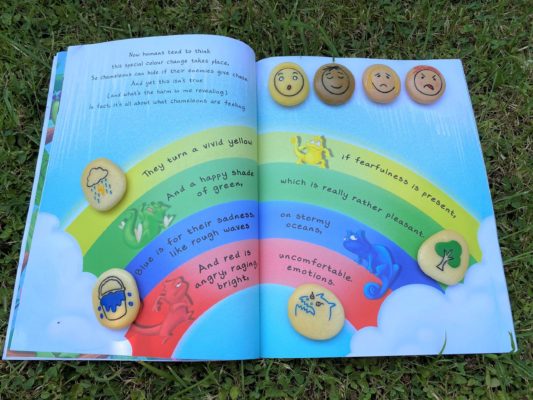
On the rainbow page of my book, a child could match each feeling and colour with a regulation stone, for example they might pick blue sad and link it with the bucket of blue paint and say they are feeling full of sorrow. You could then ask them what might help when they feel like this and they could choose another stone such as the connecting hands, ask them to explain their choice and what this means for them. If they are unsure at first explain what you see, “well I see two connecting hands, that could mean you would like my help or support or maybe you want a cuddle, what do you think?”.
By having these conversations your child will allow them to develop a wider vocabulary of emotions, which helps them to vocalise what it is they are feeling. Whatever the feelings are, the first step to coping with them is to identify them, which is simpler to do if you have already helped your child to find the language they will need to do this. Starting this early and regularly with young children, gives them the foundations and reflective tools for emotional well-being to carry with them throughout their life.
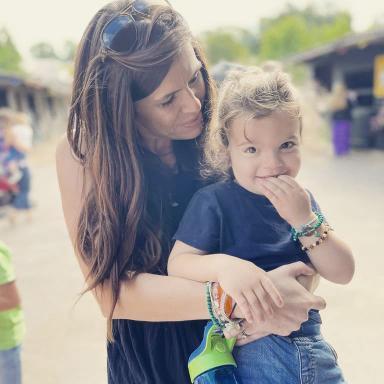
A big thank you to Hannah Peckham for writing this blog.
In 2012 Hannah graduated from Thames Valley University as a trained person-centred counsellor. She has since worked in schools and counselling services across Sussex and London.
Her first children’s book Conker the Chameleon has been popular amongst parents, the teaching community and in early years settings. However, Hannah’s early relationship with reading and writing got off to a rather bumpy start, being the first person in her school to be diagnosed with severe dyslexia at the age of five. This has been part of the inspiration for her next book which is due to be released by the end of 2021.
Hannah lives in the Sussex countryside, her favourite things are playing with her son Bodhi, walking her dogs in nature (when they are not being too naughty) and writing children’s books to help, comfort and inspire, and chocolate ice cream.
You can find and follow Hannah on Instagram @h.j.peckham

 Register/Log in
Register/Log in
 Basket
Basket
